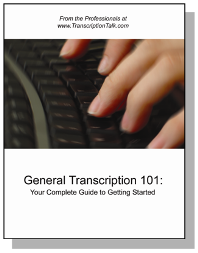I know not everyone in this industry has an actual office. Let's face it. We are relatively portable if we work on a laptop. I have taken my work to my in-laws', to the hotel on vacation, and to a cabin in the Boundary Waters Canoe Area (where I worked and turned in a file using the wireless internet from one of the lodges near where we were staying). However, when at home I tend to be a little bit more organized, and I do like my own private workspace and use a docking station for my laptop to hook up to all my toys and my extra large monitor.
We just finished an addition to our house, and one portion of that is going to be my new office. I'm really excited to be setting it up, deciding where I want things and what it is that I want, and while doing so, this article helped me make a few decisions when planning my space.
Getting Set Up
Choose a work locationMy new work location will be adjacent to a large room where I have a play area set up for the kids and a TV area just beyond that. I do work with my kids home, and this allows me to spread them out and have them working on activities if I am working while they are up where I can supervise and be available if they need me.
It is important to identify a safe and efficient location in your home as your work space. It should be quiet and away from heavy "traffic patterns" so you can spread out and work without interruption. It should be well lit and comfortable. It does not have to be an entire room. However, do not try working on the couch in front of the television. The dining room table may not be a good choice either. A distinct area will also help send the signal that this is where work is done.
I opted for building my desk directly into my workspace so I could have it exactly what I wanted, where I wanted it. I went for a 29" desktop with a keyboard tray set at 26".The desk
A conventional desk is usually 29 inches high. The recommended height for a computer desk is 26 inches high. Your desk should be sturdy enough to handle the weight of any equipment you are using.
Okay. So, I happen to LOVE my chair, both of them even. I have two Herman Miller chairs, and they are both the most comfortable chairs I have to transcribe in. I know they're pricey, but if you watch Craigslist you can usually find them a greatly reduced prices.The chair
This may be the most important piece of furniture in your home office. The seat should be adjustable and high enough that your feet are flat on the floor (usually 15-20 inches). If you cannot adjust the chair height and your feet do not reach the floor, use a footrest or wedge-shaped item, such as a three-ring binder, to support your feet. The backrest should support the back of the waist - a 15 degree back tilt is typically recommended - and should fit snugly against your lower back. If you cannot adjust the backrest, use a small pillow or rolled-up towel to support your lower back. Your forearms should be parallel to the floor when your hands are placed in the center of a computer keyboard.
LightingNew office, new lights. We have recessed lighting in the room I'm in, but I am installing a set of track lights over where my desk is that I can aim to provide the best lighting for working. I had this setup at our old house, and I found that it helped a lot at night when the lighting in the room was different than during the day.
Lighting affects comfort and performance. It should be directed toward the side or behind your line of vision, not in front of or above it. Bright light can bounce off surfaces. Northern light is considered best for both office and computer operations. If you have a computer monitor, it should be positioned at a right angle to the window.
NoisePart of the motivation for building my own desk was that I can hide all the cables in the wall. Floating desk, no cords. Okay. You'll still see my foot pedal cord, but that is one I couldn't get rid of.
No noise can be as stressful as too much noise. Some background sound (soft music or white noise) can help keep productivity up and reduce boredom. Preserve your professional image. Judgements, fair or unfair, may be based on background noises. Try to keep callers from hearing televisions, vacuum cleaners, loud music, etc.
SafetySafety is always important, and the topic of ergonomics sounds like a good one for us to focus on in later posts. Keep reading!
Regularly check your home office to keep it safe. To avoid injuries from repetitive motion, take frequent breaks. Use the straight hand-forearm method when using a keyboard to minimize wrist deviation.










































1 Comment:
Jealousy is an ugly thing. Your office sounds like my dream office. A happy workspace makes for happy typing and happy typing means more money! Yay!
Okay, yeah. That was goofy. Still, sounds like a really nice office.
Post a Comment